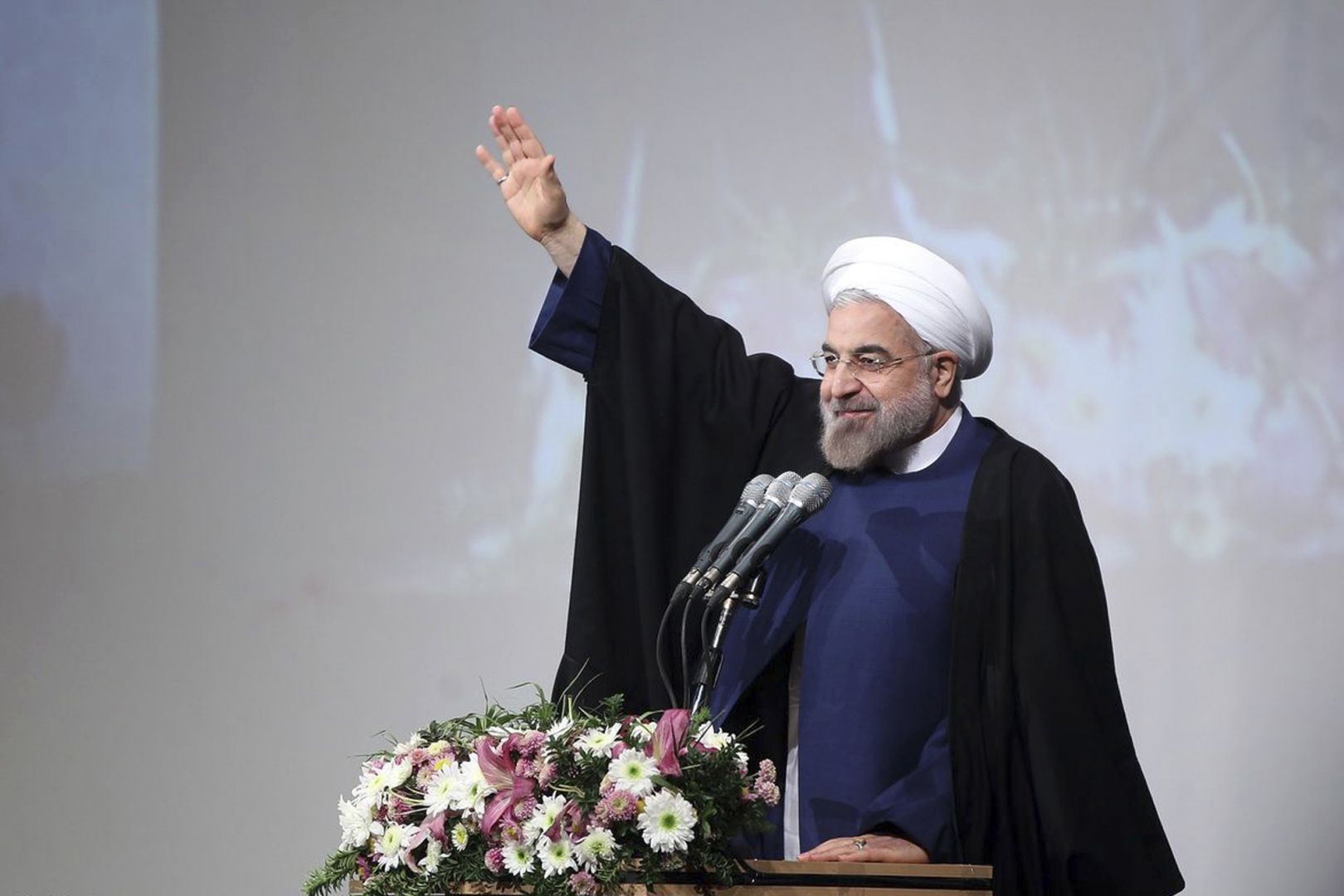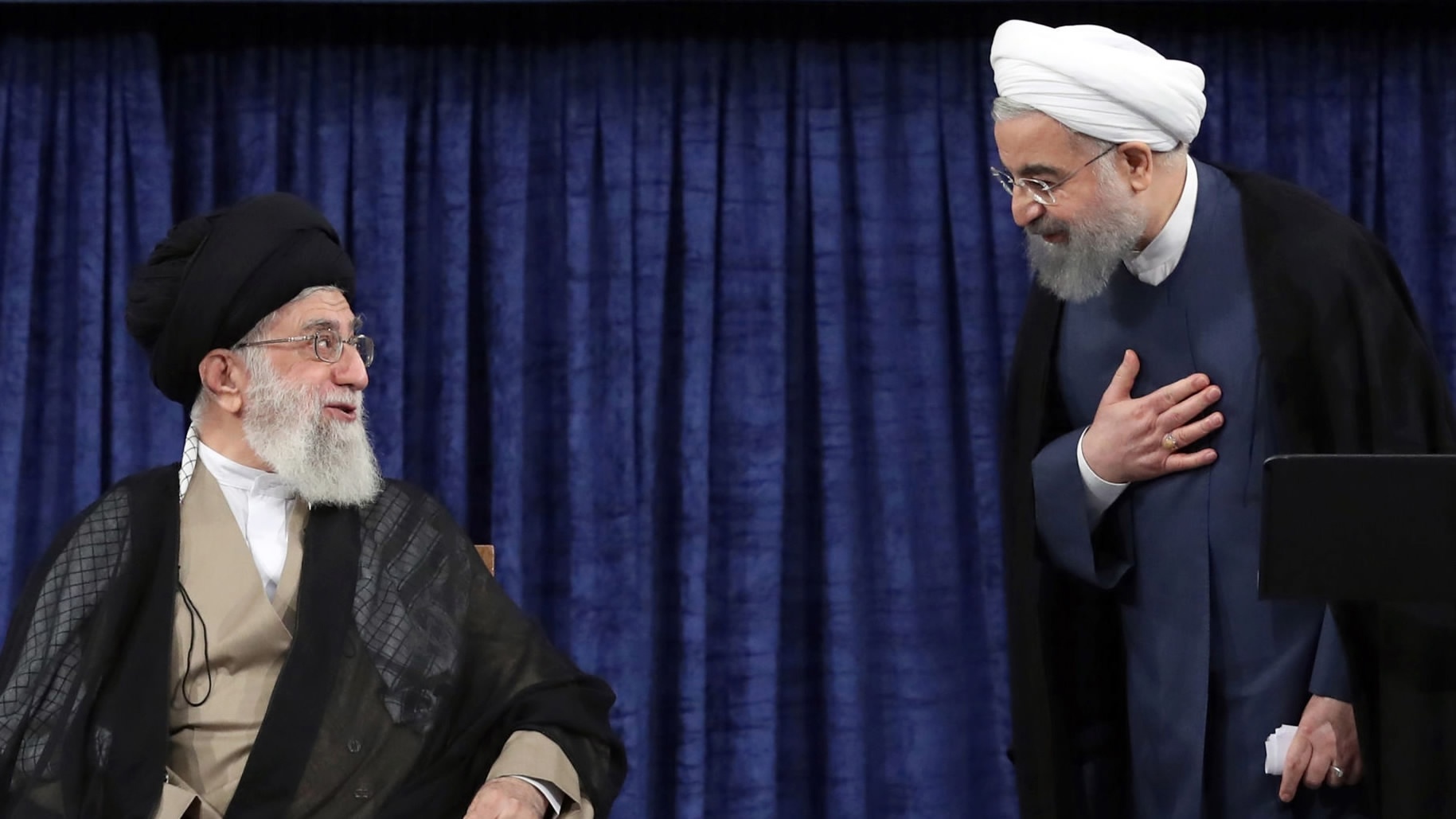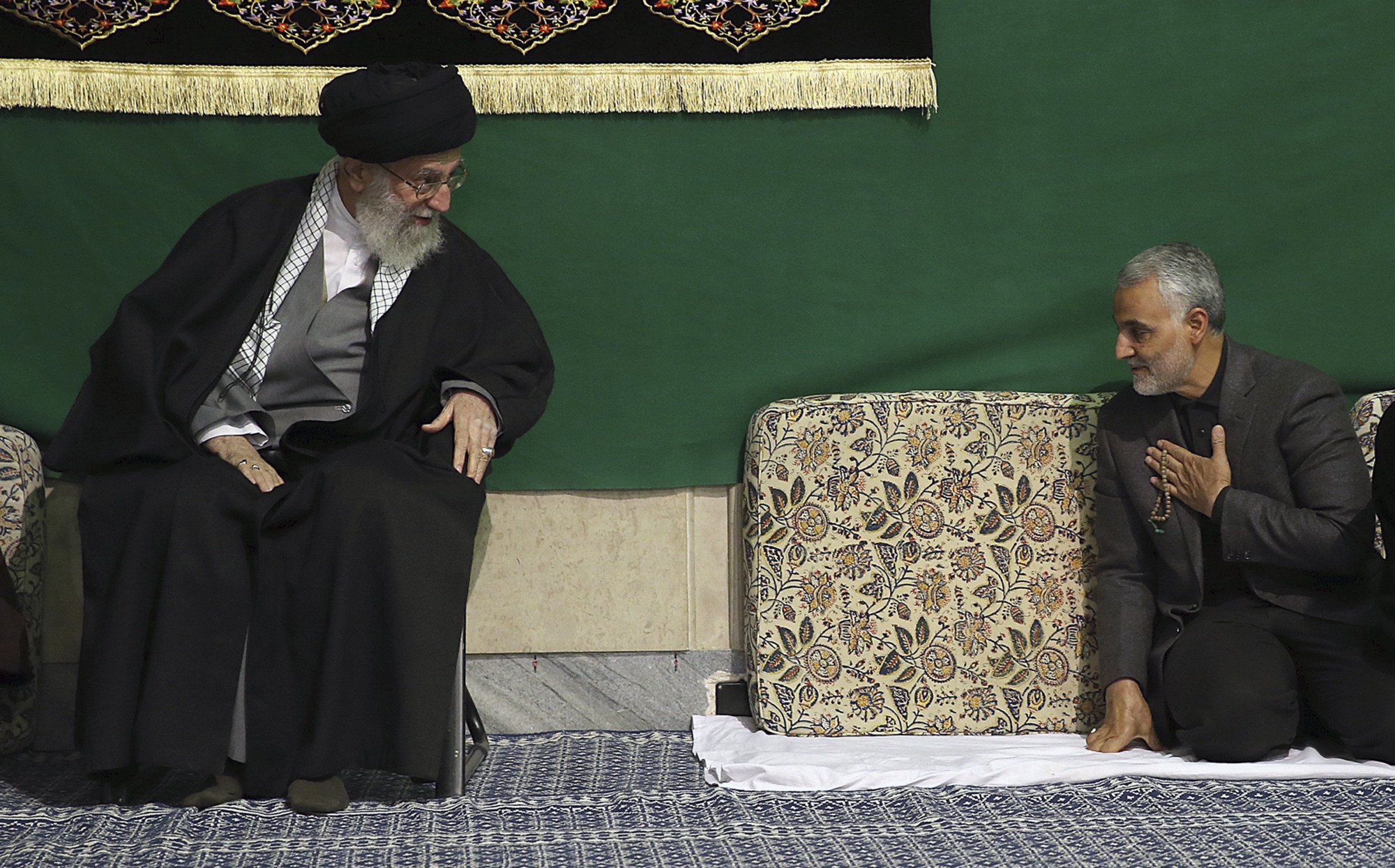
DISCLAIMER: all opinions in this column reflect view of the autor(s), not of Vocal Europe
by Dr. Roubzeh Parsi
After the United States and the European Union have lifted economic sanctions on Iran, the country can expect major economic rewards and greater interaction with the international community. This is a success for Iranian President Hassan Rouhani, under whose leadership Iran complied with its obligations under the international agreement to restrict its nuclear program. Dr. Roubzeh Parsi explains the challenges the administration could face after the parliamentary election in February 2016.
The election of Hassan Rouhani in June 2013 as President of the Islamic Republic of Iran was an expression of hope from a large section of the Iranian electorate. They hoped that the centrist insider, with long-standing good connections to the two bickering stewards of the Islamic Republic, Supreme Leader Ali Khamenei and former President Ali Akbar Hashemi Rafsanjani, would revitalise the economy and re-open the doors to the international community. While Iran has managed to maintain some ties to important countries over the past decade, the sanctions levelled against it by the US and the EU hurt an already ailing economy and left Iran isolated in a range of crucial global fora.
Nuclear negotiations
The nuclear negotiations had started already before Rouhani won the elections in 2013. Already in December 2012, Supreme Leader Khamenei had sanctioned a back channel with the Obama administration via Oman. The election of Rouhani built on that momentum. With the highly capable diplomatic team he assembled, President Rouhani conducted the negotiations wholeheartedly and in good faith, and presented a new face of Iran on the international scene. Through the interim agreement in November 2013 (Joint Plan of Action) and the two step agreement finalised in July 2015 (Joint Comprehensive Plan of Action – JCPOA) the nuclear issue was finally settled insofar that it is no longer a burning issue allowing antagonistic politics to cloud the technical dimension of non-proliferation. To date, the implementation of the JCPOA has progressed smoothly.
The greatest hurdles to the implementation of the agreement remain hard liners in US Congress and their counterparts in the Iranian parliament and other institutional bodies. While both houses approved the JCPOA, making the agreement work and yield tangible positive results will require more than a reluctant and highly skeptical attitude of both signatories. In both the US and Iran, the opponents of the nuclear agreement are constantly trying to create obstacles in order to derail it. So far, all parties have honoured their commitments and the process, which will play itself out over the next decade or so. In fact, the implementation has progressed at a higher pace than anticipated. Tehran in particular is moving ahead and fulfilling its obligations quickly (shipping out low enriched uranium and moth-balling centrifuges), in order to receive the economic quid pro quo from Brussels and Washington.
Rouhani’s ability to steer this agreement through and maintain the support of the Supreme Leader, without which there would have been no agreement in the first place, was a boon for his political fortunes. It significantly raised expectations toward his ability to salvage the economy and de-securitise the post-2009 atmosphere in Iranian society.[2]
The economy
The Iranian economy has been mismanaged for a long time. The Ahmadinejad administration (2005-2013) exacerbated this general malaise in two ways. First, his populist approach caused his economic programmes to be handled in a short sighted and extremely irresponsible way. The Iranian economy was reduced to a war chest for expanding his supporters’ economic and political power. The very basics of economic professionalism and trust were undermined, for example when the office of budget statistics that collected and collated data for the government was abolished. Second, Ahmadinejad’s confrontational foreign policy quickly isolated Iran to such an extent that Washington and Brussels managed to get international agreement on a series of increasingly tougher sanctions on Iran. This raised Iranian costs for doing business with the international community and further eroded economic growth.
After initial efforts to get a better understanding of the economy, the Rouhani administration took steps to curb inflation, which has posed a recurring problem. While this effort has so far proved successful, cutting the state budget and other anti-inflationary steps also weakened economic growth. The Rouhani administration planned to offset this side effect by regaining access to international markets and other avenues for growing the economy. While this calculation makes sense, the weakness lies in the incompatible time lines. The access to, and re-invigoration of, the Iranian economy is a medium term project leading to dividends further down the line.[3] The political need to show results and help the electorate keep faith, however, requires a near constant delivery of tangible economic growth and improvement.
As a result, the Iranian economy was faring better during the negotiations in 2014 than it did in 2015 when the actual deal was closed. An economic upturn requires investment and spending, but the slump in oil prices is further hampering the Iranian government’s ability to commit to such investments. The population at large has yet to see any real improvement of their purchasing power or employment rates. In this regard, their hope in the Rouhani presidency has not been fulfilled.
As competition in the economic sphere and politics are intertwined, economic rewards are also interpreted in political terms and vice versa. In addition to being skeptical about how quickly and effectively the sanctions regime will be dismantled, many Iranians fear that it will take years before any economic benefits from this process will materialise for the low and mid-income strata. This sense of urgency combined with the nexus between business and politics is not conducive for inclusive and participatory social and economic development. There is therefore a tendency to favour a top-down approach which prioritizes security and attempts to separate between different kinds of interaction with the international community. In short, political, business, academic, and cultural activities are tolerated to varying degrees and seen as distinct spheres that must remain separate. Prime examples of how such an approach is practised include China and Dubai.
The Rouhani administration has so far hewed to rather conventional austerity measures[4], curbing inflation and cutting costs. If the administration maintains this approach, combined with the slow uptake of actual foreign investment, the economy is in danger of shrinking rather than growing. It is apparent that even within the government, different ideas exist about how this circle should be squared.[5] The discrepancy is the result of the aforementioned conflicting time lines of political dividends (quick gains) and subsequent positive economic effects (medium/long term).
The consequences of this tension will become clear in the Iranian Parliamentary elections on February 26, 2016. The Rouhani administration needs a parliament that is willing to cooperate in order to translate its non-nuclear agenda into actual policy. Without legislative support, any attempts to change the laws governing Iran’s economy, the press, and other matters pertaining to civil liberties will be futile. The long term state of the economy as well as the political fortunes of the President hinge on the electorate’s and the parliament’s continued support for his agenda.
Iranian politics: more of the same?
In the shadow of the nuclear negotiations and agreement, other election promises made by Rouhani have not progressed as much. This is especially the case with regard to Rouhani’s attempt to de-securitise the societal atmosphere. The civil liberties dimension of Rouhani’s election mandate has not made much headway, although the general atmosphere has somewhat improved. This is partly because of constitutional limits to the President’s power to shape internal matters. The head of the judiciary, for example, is appointed by the Supreme Leader and the minister of intelligence is appointed with his explicit approval. From a human rights perspective these are the two most important government posts.
The hard liners for their part – whether political or from within the security establishment – have been extremely wary of any general opening, especially if it entails political or economic gains for their political enemies and competitors. For the hard liners and the security apparatus the aftermath of the 2009 elections were both a wake-up call and a boon: they established the narrative of “sedition” in order to tarnish any kind of dissent or opposition within the elite itself. They have no intention to abandon this narrative or the power prerogatives it gives them in the constant political infighting in Tehran.
The attempts to box in the President on domestic matters increased with the signing of the nuclear agreement. It was important for the Supreme Leader to show his conservative base that he agreed to resolve the nuclear issue, while he maintains his opposition to establishing relations with Washington, or to allowing an “inrush” of western cultural influence following the opening of better trade relations with the EU. These factors are amplified by the approaching parliamentary elections in February, which play into the tense political atmosphere. The hard liners want to prevent President Rouhani from capitalising on the political victory of the nuclear issue by gaining additional supporters in parliament.
The pre-election atmosphere is further heating up because the Assembly of Experts elections are synchronised with the Parliamentary elections. The members of the Assembly of Experts select the country’s Supreme Leader. Its members are chosen for eight years, which means that the coming Assembly will most likely be faced with selecting Ayatollah Khamenei successor (Khamenei is 76 years old and reportedly has health problems). Both the President and prominent allies such as Ayatollah Rafsanjani and Hassan Khomeini (Ayatollah Khomeini’s grandson) have registered as candidates.
There is clear recognition in many political and academic circles that the country needs an injection of investment and trade, and that this cannot be achieved by solely relying on domestic resources. Yet there are many hurdles along the way before the dividends of such policies will become reality. Along with the effects of changes in economic policy, the political dimension of Rouhani’s agenda raises hopes and fears amongst many Iranians: who is going to benefit from greater interaction with the international community? And how will this interaction affect the social and cultural fabric of the country? In this regard, Iranians’ fears and hopes are no different than those expressed throughout the 20th century when the Pahlavi monarchy undertook modernisation projects (such as building infrastructure, raising literacy, developing industries). The difference is that in some regards, the Iranian economy and society have already developed way past basic ‘catch up schemes’.[6] In fact, now it is the factionalised political elite that needs to catch up.
Dr. Rouzbeh Parsi is Director of the European Iran Research Group (EIRG). He is a Senior Lecturer at Lund University, Department of History and Human Rights, specialising on Iran and the Middle East. Between 2009 and 2013, he worked as Senior Analyst at the EU Institute for Security Studies (EUISS) in Paris.
The Heinrich Böll Foundation frequently engages with the author on topics related to Iran. The views expressed in this article are those of the author and do not necessarily represent the views of the Heinrich Böll Foundation.
- This article first appeared on Henirich Boell Stiftung
[1] The author would like to thank fellow EIRG members Dina Esfandiary and Lars-Erik Olofsson for comments and advice in writing this article.
[2] The Presidential election results in 2009 were controversial and led to popular protests against the incumbent, Mahmoud Ahmadinejad. The subsequent crack down on protestors and the imprisonment of the two protesting presidential candidates, Mir Hossein Mousavi and Mehdi Karroubi (both still under house arrest), led to serious rifts within the ruling political elite.
[3] See Ali Ghezelbash and Rouzbeh Parsi: “The Obstacles Ahead in Europe’s Race to Trade With Post-Sanctions Iran”, World Politics Review, published on 2015-8-20,http://www.worldpoliticsreview.com/articles/16499/the-obstacles-ahead-in-europe-s-race-to-trade-with-post-sanctions-iran
[4] See Djavad Salehi-Isfahani: “Iran’s Economy after the Nuclear Deal”, Lobelog, 2015-07-20, http://lobelog.com/irans-economy-after-the-nuclear-deal/ and “Is Iran’s inflation deflating economic recovery?”, al-Monitor, 2015-10-06, http://www.al-monitor.com/pulse/originals/2015/10/iran-inflation-fears.html
[5] See letter by four government ministers to the President, written on September 9 2015 and published October 4 by Mehr News agency.http://www.mehrnews.com/news/2930894/نامه-مشترک-۴-وزیر-به-رئیس-جمهور-تصمیم-ضرب-الاجل-اقتصادی-بگیرید. For an analysis of the context of the letter see Arash Karami, “Four ministers secretly warn Rouhani about the economy, but why?”, al-Monitor, 2015-10-04, http://www.al-monitor.com/pulse/originals/2015/10/four-ministers-warn-rouhani-economy.html
[6] The notion of ‘catch up’ assumes that Western technological and institutional standards represent clearly defined developmental stages and benchmarks that can be emulated. This entails a neatly ordered sequence where each stage has a set of characteristics that in turn generates and defines the next stage.



